After truckie Douglas Crabbe was kicked out of the bar of the Inland Motel at Uluru, he appeared to accept the situation and drive off. No one was prepared for the deadly events that followed
WHEN the truck hit the wall, it was like a bomb going off.
Twenty-five tonnes of metal smashed into the Inland Motel at Uluru at high speed around 1am on August 18, 1983.
Within seconds, four people lay dead, another was dying, and 16 were injured. The motel was a wreck.
With his Mack truck holding up what was left of the Besser block structure, Douglas Crabbe, 36, calmly got out of his vehicle, smiled at one of his victims, and jogged off into the central Australian night.
TRUE CRIME: The masked murderer and the girl who changed the internet
FOLLOWING THE CLUES: The truth behind TV’s hits and myths
At first light, the magnitude of the carnage became clear. Crabbe’s truck was embedded halfway into the building. Rubble was everywhere. Bloodstains were on the truck’s bullbar. Clothing and boots lay scattered around. The adjoining dining room became a makeshift mortuary and emergency room.
It looked like the vehicle had taken a catastrophic wrong turn, or the brakes had failed.
But this was no accident. This was the Northern Territory’s worst mass-murder.
Mark McAdie, was the officer in charge at the local police station the night of the attack. Arriving within minutes, he realised the devastation was a horrific crime and not some bizarre accident.
“From the tyre marks on the gravel and on the concrete floor, I knew the truck hadn’t braked before it hit the pub. It had actually accelerated,” McAdie said years later.
Douglas Crabbe got ugly when he had a few drinks. On the night of August 17, 1983, when he called in to the Inland Motel at Uluru for a few beers after driving his truck all day, he had downed a few schooners when things turned nasty.
According to witnesses, he jumped on to the bar and threw a stubbie into a sink, called a woman a “bitch” and then walked behind the bar to help himself to another drink.
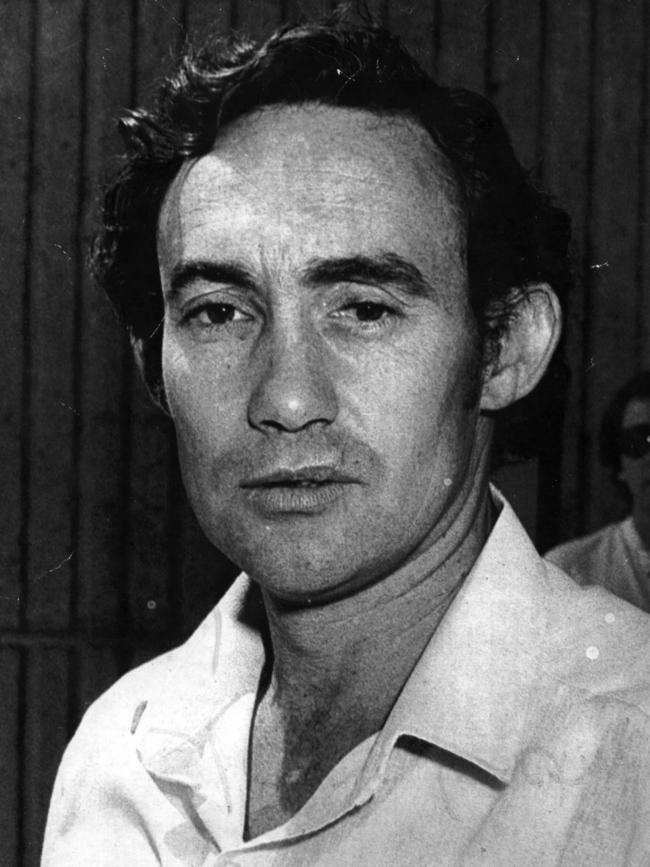
After being wrestled to the floor and held in a headlock by the barman and at least three other drinkers, Crabbe was kicked out of the pub at 12.30am.
What happened next is summarised in court documents from his trial.
“The respondent walked approximately 500 metres back to his truck. He then drove the truck and two attached trailers a small distance to the Uluru Motel.
“At the motel, the respondent unhitched one of the trailers. That was an exercise that required a degree of skill and dexterity, although it must be recognised that the respondent was very experienced in the operation of the truck and the trailers.
“After unhitching a trailer, the respondent drove the truck and trailer back to the Inland Hotel.
“Crabbe then manoeuvred the 25 tonne semi and trailer, at speed, around a blind bend, through a car park, around a minibus, turned and drove it through the Besser brick wall into the crowded bar, crushing the people there.
“Leaving the engine running, he then got out of the truck, smiled down at one of his victims, stepped over some bodies and ran.
“This was at 1.10am. It had been 40 minutes between being thrown out and driving the truck into the bar.”
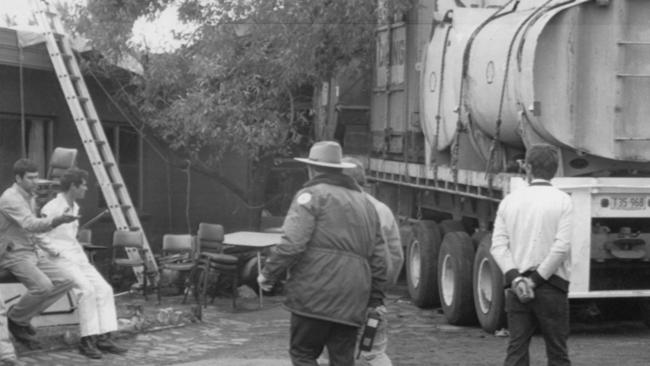
Bernadette Schiller was a carefree 20-year-old out for a drink with friends that night.
She was standing at the jukebox when she saw Crabbe’s truck through a window a split second before it ploughed into the pub.
“I didn’t even have time to react. It just crashed through the place. I was thrown to the floor and I remember the wheels were millimetres from me. I was in the foetal position trying to get away from the wheels,” she told News Corp in an interview in 2016.
“The noise was unbelievable and people screaming … it was just awful. After all these years it is so fresh in my mind. It seriously was like a bomb going off. I got hit by the bull bar and thrown away.
“I can recall every detail of that night – smells, sounds, terror and the image of my friends’ brain matter on me will be with me forever.
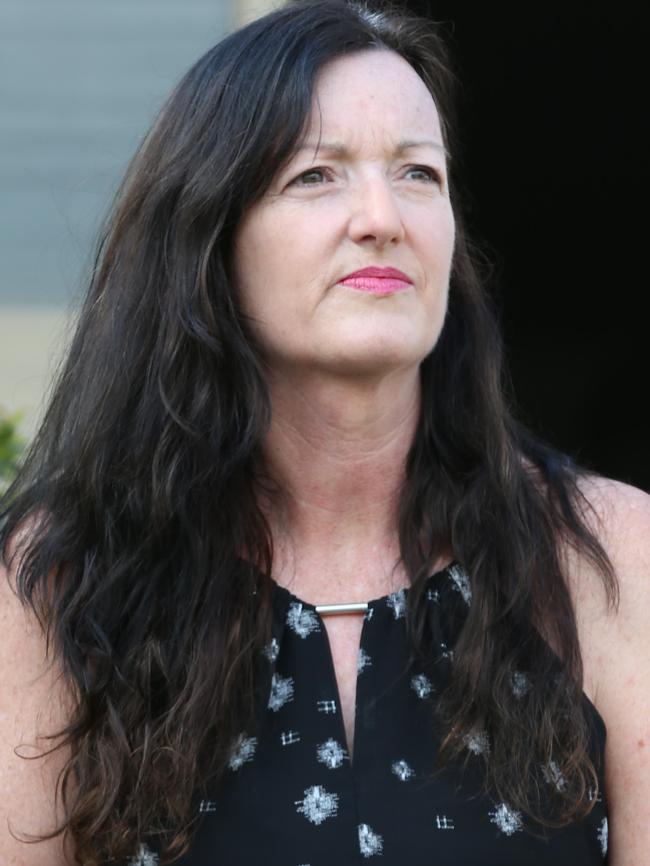
“One of my friends was pinned under the bull bar. Crabbe stepped over the top of him and laughed.”
Mrs Schiller suffered broken ribs, urinated blood for six months, was bruised “black and blue from shoulder to ankle” where the truck’s bull bar struck her, and suffered ongoing health and psychological issues 30 years later. Two of her friends, David Seng, 24, and Adrian Durin, 21, were among the dead.
“I’d also been talking to an older couple during the night. After the truck came through, I saw the man. He had a cut on his head and I remember I had a pad in my bag and I took it out and used it to stop the bleeding. I asked if there was anything else I could do and he just said, ‘My wife … my wife’s dead’.’’
That man was Ronald Slinn. He was knocked down by the truck when it exploded through the wall.
He finished up just behind the front right hand tyres of the truck covered with a fair amount of debris from the bar and a Besser block or two.
Ronald’s wife Patricia, 45, was killed instantly. Also dead was Helen Fuller, 22. Leslie McKay-Ramsey, 35, died shortly after from her injuries.
Despite the destruction, the lights were still on.
FOLLOW: True Crime Australia on Facebook and Twitter
At first Ronald panicked because he thought the truck was going to reverse over his legs. In what he described as a “rather loud” voice, he called for help. He looked toward the cabin area where he noticed movement and again called for help.
He said the cabin door opened and the driver began to climb out. He called out again. Crabbe looked down on him and their eyes met. Crabbe then smiled at him, stepped over his head onto what was left of the bar and ran outside.
The killer fled into the scrub. Police used Aboriginal trackers to search for him, but the following morning, he walked out of the bush 22km away near the Yulara Village construction site and waited to be arrested.
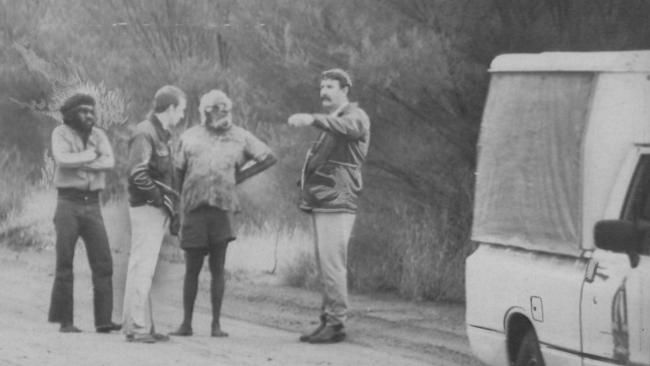
William O’Neill, the catering manager from the Yulara Construction Camp, testified at Crabbe’s trial that he found Crabbe walking towards him near the construction camp on the morning of August 18.
Crabbe waited with O’Neill for police to arrive, asking the extent of the damage to the motel. He was told that at least four people had died, including “one of my boys from the kitchen”.
At his trial, Crabbe pleaded not guilty and offered no explanation, claiming he had a memory lapse from the time he removed the second trailer until he woke to the sound of the exhaust as his rig lay amid the carnage. “I still don’t believe I’d be capable of doing anything like that,” he told the court.
Crabbe was found guilty and sentenced to five consecutive terms of life imprisonment. he appealed, and a retrial was granted after it was found the judge had erred in his directions to the jury. At the second trial, Crabbe was again found guilty and again sentenced to five consecutive terms of life imprisonment.
In 2005, he was moved to prison in WA on compassionate grounds.
Crabbe became eligible for release on parole in August 2013 at the age of 66. His first parole application was rejected, He became eligible again in 2016 and was again rejected.
He will be eligible again in 2019.
Bernadette Schiller said that for more than 30 years she carried the guilt that she may have played a role in Crabbe’s decision to smash his Mack truck through the pub.
“He’d pinched me on the bum that night,” she told News Corp in 2016.
“He was scaring the hell out of me and being really disgusting. I told him to ‘f*** off’. It was the first time I’d ever said that to someone.
“Straight after that he was behind the bar helping himself to a drink and then he took a swing at the barman. For years I have felt guilty – is that what set him off?’’
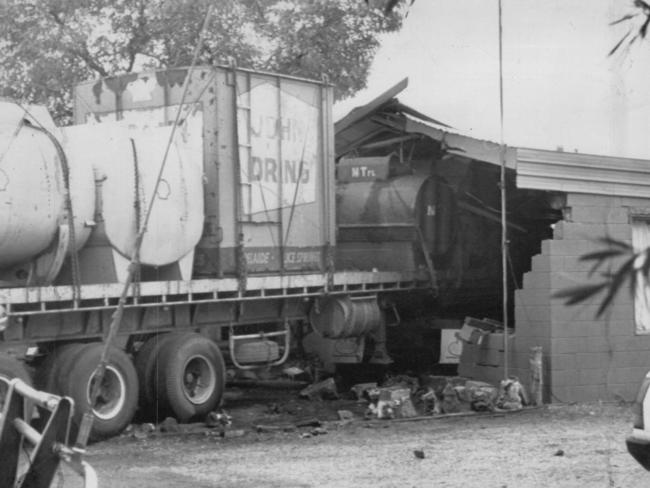

Photos show chilling find at US Wieambilla accused’s house
Prosecutors fighting to allow Australian police to give evidence in the upcoming trial of Donald Day, who is linked to the Wieambilla massacre, say the cases have chilling similarities.
Shock link between UK child killer and Aussie bishop stabbing
The teen who murdered three little girls at a Taylor Swift-themed dance class in England had searched for material on the stabbing of a Sydney bishop.